A rotary cheese grater is a kitchen tool designed for...
Read More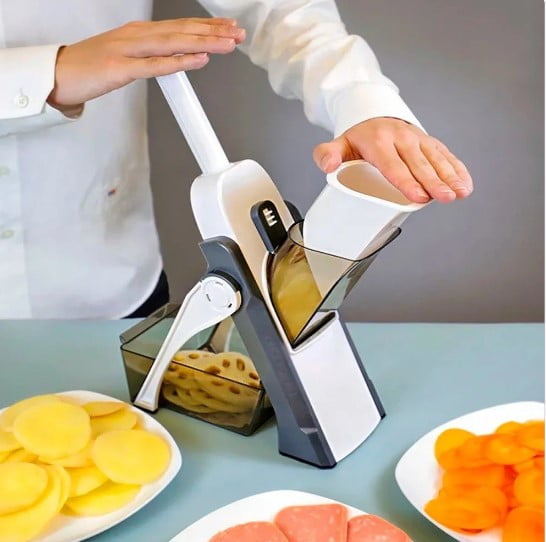
A mandoline slicer is a versatile kitchen tool designed to simplify and expedite the process of slicing, dicing, and julienning various fruits, vegetables, and other ingredients. Known for its precision and uniformity, a mandoline slicer typically features an adjustable blade that can be set to different thicknesses, ensuring consistent cuts for professional-looking dishes. This handy device is favored by chefs and home cooks alike, making it easier to achieve precise and aesthetically pleasing results in the kitchen.
What brand is the best mandoline slicer?
The “best” mandoline slicer can vary based on individual preferences, needs, and budgets. Different brands offer various features and designs that cater to specific cooking styles and requirements. Here are a few well-regarded brands that are known for producing high-quality mandoline slicers:







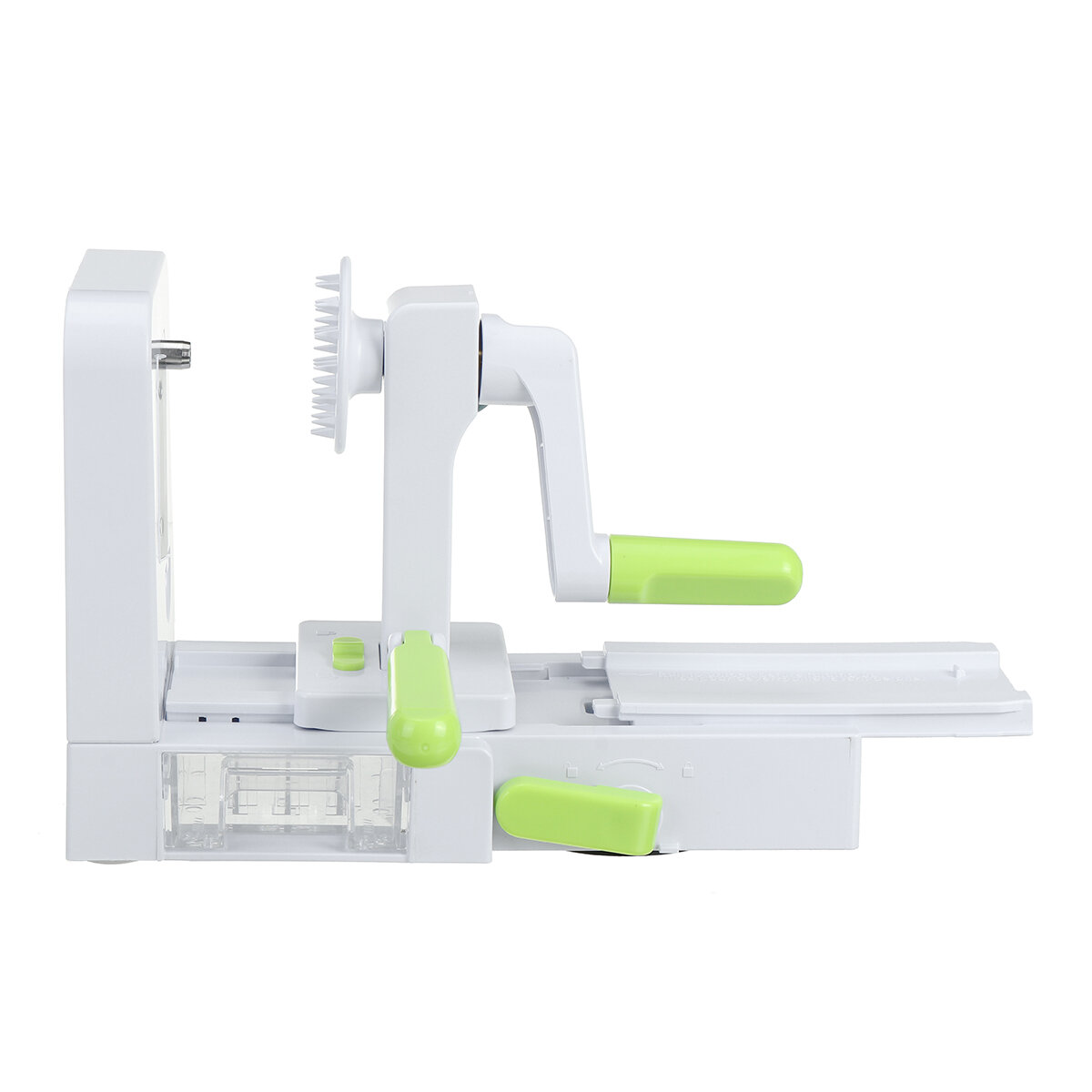

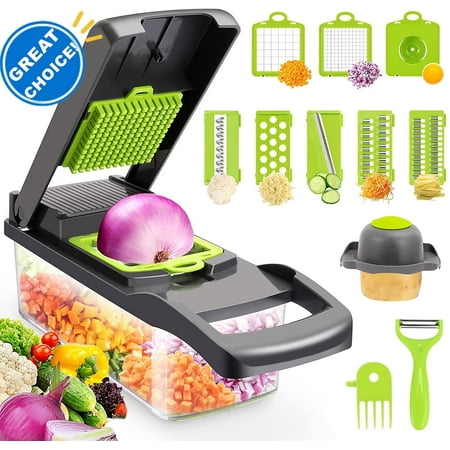
- OXO Good Grips: OXO is known for its ergonomic and user-friendly kitchen tools. Their mandoline slicers often come with adjustable settings, safety features, and comfortable grips.
- Benriner: Benriner mandoline slicers are popular for their durable Japanese stainless steel blades. They offer a variety of models, including traditional hand-held mandolines and vertical slicers.
- Swissmar Borner: Swissmar Borner is known for its V-shaped mandoline slicers that offer different blade inserts for various types of cuts. They are recognized for precision and safety features.
- KitchenAid: KitchenAid produces mandoline slicers that often come with multiple blade options and adjustable settings. Their products are known for their sturdiness and versatility.
- Mandoline by Mueller Austria: This brand offers mandoline slicers with various cutting options, safety features, and compact designs. They often come with accessories and are well-regarded for their functionality.
- Progressive International: Progressive mandoline slicers are appreciated for their adjustable thickness settings and ease of use. They often come with storage features and safety locks.
- Bron Coucke: Bron Coucke is known for its professional-grade mandoline slicers that are favored by chefs. They offer durability, precision, and high-quality construction.
When choosing a mandoline slicer, consider factors like blade quality, adjustable settings, safety features, ease of cleaning, and the types of cuts you want to achieve. Reading reviews, comparing features, and understanding your own cooking needs will help you determine which brand and model are the best fit for you. Additionally, prioritize safety by using hand guards and following proper usage guidelines to prevent accidents while using a mandoline slicer.
Why is it called a mandoline slicer?
A mandoline slicer gets its name from its resemblance to a musical instrument called a mandolin, specifically the stringed musical instrument with a fretted neck and a resonating body. The design of the kitchen tool, particularly the way it has a flat platform with a sharp blade and a handle, somewhat resembles the shape of a mandolin, albeit on a smaller scale.
The term “mandoline” in this context is derived from the French word “mandoline,” which originally referred to the musical instrument. Over time, this term was also used to describe the kitchen tool because of the visual similarity between the two.
The mandoline slicer’s name is a nod to its appearance rather than its function, as it has nothing to do with making music but everything to do with efficiently and uniformly slicing, dicing, and julienning fruits and vegetables in the kitchen.
What is mandolin slicer used for?
A mandoline slicer is a versatile kitchen tool used for slicing, julienning, and creating uniform cuts of various fruits, vegetables, and other ingredients. It offers precision and consistency in slicing, making it a valuable addition to the kitchen. Here are some common uses for a mandoline slicer:
- Slicing: The primary function of a mandoline slicer is to create even and consistent slices of fruits and vegetables. It’s especially useful for recipes where uniformity in slicing is essential, such as salads and gratins.
- Julienning: Many mandoline slicers come with attachments that allow you to create thin matchstick-like strips, known as julienne cuts. These are great for stir-fries, salads, and coleslaws.
- Dicing: Some mandoline slicers offer dicing options, allowing you to create small cubes for salsas, stews, and side dishes.
- Waffle Cuts: Create textured waffle-cut slices of ingredients like potatoes and other root vegetables, ideal for frying or baking.
- Matchstick Cuts: Produce thin, elongated strips that add a crisp and elegant touch to dishes.
- Fine Shreds: Make delicate shreds of ingredients like cabbage, lettuce, and cheese for coleslaws, salads, and toppings.
- Crisps and Chips: Slice potatoes, sweet potatoes, and apples into thin slices for homemade chips, crisps, and dehydrated snacks.
- Garnishes: Elevate your dishes’ presentation by creating decorative garnishes from fruits and vegetables.
- Vegetable Noodles: Make vegetable noodles (“zoodles”) from zucchini, carrots, and other vegetables for a healthier alternative to traditional pasta.
- Onion Rings: Create uniform slices for making crispy onion rings.
- Appetizers: Easily prepare appetizers like cucumber roll-ups or stuffed bell pepper cups with perfectly sized slices.
- Fruit Salads: Create beautiful and uniform slices of various fruits for eye-catching fruit salads.
- Potato Gratin: Use thin, even slices for layering in casseroles and gratins.
- Homemade Pickles: Slice cucumbers, beets, and other vegetables for making your own pickles.
- Creative Plating: Enhance your dishes’ visual appeal by incorporating differently sliced ingredients.
The mandoline slicer simplifies these tasks, saving time and ensuring that your cuts are precise and consistent. However, it’s important to use caution when handling a mandoline slicer, as the blades are typically very sharp. Always use the hand guard provided and follow proper usage guidelines to avoid accidents.
Can you slice cheese on a mandolin?
Yes, you can slice cheese on a mandoline slicer. However, there are a few considerations to keep in mind when slicing cheese with a mandoline:
- Cheese Type: Not all cheeses are suitable for slicing with a mandoline. Hard cheeses like cheddar, Parmesan, and Swiss work well. Softer cheeses, such as mozzarella or brie, may not hold their shape as neatly and could become mushy when sliced.
- Temperature: Cheese is easier to slice when it’s cold. For best results, refrigerate the cheese until it’s firm but not frozen before slicing.
- Blade Sharpness: Ensure that the mandoline’s blade is sharp. Dull blades can result in uneven or ragged slices.
- Thickness Setting: Adjust the mandoline to the desired thickness for your cheese slices. Thinner slices are suitable for cheese platters, while slightly thicker slices may be better for sandwiches.
- Clean Blade: Make sure the mandoline’s blade is clean and free of any residue or previous ingredients before slicing cheese. Residue can affect the quality of the slices.
- Hand Guard: Always use the hand guard or food holder provided with the mandoline to protect your fingers from the sharp blade while slicing.
- Even Pressure: Apply even and steady pressure when sliding the cheese over the blade. This helps achieve consistent slices.
- Storage: Cheese slices can stick together, so consider placing a sheet of parchment paper or plastic wrap between each slice to prevent sticking when storing them.
While you can slice cheese with a mandoline, it’s important to exercise caution as the blades are sharp, and cheese can be slippery. Always prioritize safety when using the tool, and be mindful of your fingers to avoid accidents.
Does a mandoline slicer cut chips?
Yes, a mandoline slicer can be used to cut chips, whether you’re making potato chips, sweet potato chips, or chips from other vegetables like zucchini or beets. Here’s how to use a mandoline slicer to cut chips:
- Choose the Right Blade: Most mandoline slicers come with interchangeable blades or adjustable settings that allow you to choose the desired thickness for your chips. For chips, you’ll typically want a thinner setting.
- Prepare the Ingredient: Wash and peel the vegetables (if desired) that you want to turn into chips. Potatoes and sweet potatoes are common choices, but you can also experiment with other vegetables.
- Secure the Mandoline: Place the mandoline slicer on a stable and flat surface. Make sure it’s securely in place before you start slicing.
- Use the Hand Guard: Always use the hand guard or food holder provided with the mandoline to protect your fingers from the sharp blade. Place the vegetable into the hand guard and secure it with the prongs or spikes.
- Slice the Chips: Carefully slide the hand guard and the vegetable across the blade of the mandoline in a smooth, even motion. Keep your fingers away from the blade, and apply steady pressure to create uniform chips.
- Collect the Chips: As you slice, the chips will fall onto the surface below the mandoline. You can collect them as you go or place a tray or plate underneath to catch them.
- Repeat as Needed: Continue slicing until you have the desired quantity of chips. Be mindful of your hand placement and the safety of your fingers throughout the process.
- Store or Cook: Once you’ve sliced the chips, you can either store them for later use or proceed with cooking. To make potato chips, for example, you would typically deep-fry or bake them until they’re crispy.
Using a mandoline slicer to cut chips allows you to achieve consistent thickness, which is important for even cooking. However, always exercise caution when using a mandoline slicer, as the blades are sharp, and it’s essential to follow safety guidelines to avoid accidents.
Can a mandolin slice onions?
Yes, a mandoline slicer can be used to slice onions. Slicing onions with a mandoline can be especially helpful when you need uniformly thin and even slices for recipes like salads, sandwiches, or garnishes. Here’s how to do it:
- Prepare the Onion: Start by peeling the onion and cutting off the root end. You can also cut the onion in half horizontally to make it more manageable if it’s large.
- Secure the Mandoline: Place the mandoline slicer on a stable and flat surface. Ensure that it’s securely in place before you begin slicing.
- Choose the Right Blade: Select the appropriate blade or thickness setting on the mandoline to achieve the desired thickness for your onion slices. If your mandoline has an adjustable thickness setting, you can choose the setting that suits your needs.
- Use the Hand Guard: Always use the hand guard or food holder provided with the mandoline to protect your fingers from the sharp blade. Place one half of the onion into the hand guard and secure it with the prongs or spikes.
- Slice the Onion: Carefully slide the hand guard and the onion across the blade of the mandoline in a smooth, even motion. Keep your fingers away from the blade, and apply gentle but steady pressure to create uniform onion slices.
- Collect the Slices: As you slice, the onion slices will fall onto the surface below the mandoline. You can collect them as you go or use a tray or bowl to catch the slices.
- Repeat as Needed: Continue slicing until you’ve sliced the entire onion. If you have the other half of the onion left, you can repeat the process.
- Store or Use: Once you’ve sliced the onions, you can use them immediately in your recipe or store them for later use.
Using a mandoline slicer to slice onions can save you time and effort, and it ensures that the slices are consistent in thickness, which can be particularly useful for cooking and presentation. However, always exercise caution when using a mandoline, as the blades are sharp, and it’s essential to follow safety guidelines to avoid accidents.
Is a mandoline slicer worth it?
Whether a mandoline slicer is worth it depends on your cooking habits, preferences, and specific needs in the kitchen. Here are some factors to consider when evaluating whether a mandoline slicer is a worthwhile addition to your culinary arsenal:
Pros:
- Precision Slicing: A mandoline slicer excels at creating even, uniform slices of fruits and vegetables, which can enhance the visual appeal of your dishes.
- Time Efficiency: It can significantly speed up the process of slicing ingredients, saving you time in the kitchen, especially when preparing large quantities.
- Versatility: Many mandoline slicers offer various cutting options, such as julienne, matchstick, and waffle cuts, expanding your culinary creativity.
- Consistency: Uniformly sliced ingredients cook evenly, ensuring consistent results in your recipes.
- Safety Features: Modern mandoline slicers come with safety features like hand guards to protect your fingers from the sharp blades.
- Professional Presentation: Achieve restaurant-quality presentations with perfectly sliced ingredients.
Cons:
- Learning Curve: Using a mandoline slicer effectively may require practice to ensure safety and obtain the desired results.
- Storage: Mandoline slicers can take up storage space in your kitchen, so make sure you have a suitable place to store it when not in use.
- Cost: Quality mandoline slicers can be an investment, and some models might be more expensive than others.
- Maintenance: Proper cleaning and maintenance are essential to keep the slicer in good condition.
- Limited Use: While versatile, mandoline slicers are primarily designed for slicing fruits and vegetables. If you’re looking for a tool with broader capabilities, you might consider other kitchen appliances.
To determine if a mandoline slicer is worth it for you, think about how often you cook, the types of dishes you prepare, and whether the benefits of precision slicing and time savings align with your cooking style. Reading reviews, comparing features, and considering your budget will help you make an informed decision. If you frequently prepare salads, stir-fries, or other dishes that require sliced ingredients and you value efficiency and consistency, a mandoline slicer could be a valuable addition to your kitchen.
How do you use mandoline slicer?
Using a mandoline slicer effectively and safely requires careful setup and operation. Here’s a step-by-step guide on how to use a mandoline slicer:
Step 1: Gather Your Tools and Ingredients
- You’ll need your mandoline slicer, the food item you want to slice (e.g., vegetables or fruit), and the hand guard or food holder that came with the mandoline.
Step 2: Prepare the Mandoline
- Place the mandoline slicer on a clean, flat, and stable surface, such as a cutting board or countertop.
- Ensure that the mandoline is securely in place and won’t move during slicing.
Step 3: Choose the Desired Blade or Thickness Setting
- Depending on your mandoline model, you can choose from different blades or adjust the thickness setting to achieve the desired cut. Consult your mandoline’s user manual for specific instructions on blade adjustment.
Step 4: Prepare the Food Item
- Wash and peel (if necessary) the food item you want to slice. For safety and ease of slicing, it’s best to cut the food into a shape that fits comfortably in the hand guard or food holder. Trim the ends or edges as needed.
Step 5: Use the Hand Guard or Food Holder
- Place the food item into the hand guard or food holder. The hand guard usually has prongs or spikes to secure the food in place. Make sure the food is centered and held firmly.
Step 6: Begin Slicing
- Hold the mandoline slicer’s handle or knob with one hand and the hand guard or food holder with the other.
- Position the hand guard or food holder at the top of the mandoline slicer, allowing the food to rest against the blade.
- Push the hand guard or food holder gently and steadily toward the blade while maintaining a firm grip. Keep your fingers away from the blade.
Step 7: Collect the Slices
- As you slide the hand guard or food holder down the mandoline, the slices will fall onto the surface below. Use a tray, bowl, or cutting board to catch the slices.
Step 8: Repeat as Needed
- Continue slicing the food item until you’ve processed the entire piece.
Step 9: Clean the Mandoline
- After use, disassemble the mandoline according to the manufacturer’s instructions.
- Hand wash the components, taking care with the sharp blade. Some parts may be dishwasher safe, but refer to the user manual for guidance.
Step 10: Store Safely
- Store the mandoline and its components in a safe and easily accessible place.
Always prioritize safety when using a mandoline slicer. The hand guard or food holder is crucial for protecting your fingers from the sharp blade. Follow the manufacturer’s instructions closely, and practice with caution until you become comfortable with the slicing process.
What is the best size mandoline slicer?
The best size for a mandoline slicer depends on your specific needs, kitchen space, and the types of recipes you frequently prepare. Mandoline slicers come in various sizes, from compact handheld models to larger, countertop versions. Here are some considerations to help you determine the best size for your needs:
- Frequency of Use: If you plan to use the mandoline slicer frequently, investing in a larger, countertop model may be worthwhile. These models typically offer more stability and versatility in terms of cutting options.
- Kitchen Space: Consider the available space in your kitchen. Smaller handheld mandolines are space-efficient and easy to store, making them suitable for kitchens with limited counter and storage space.
- Versatility: Larger mandoline slicers often come with a wider range of blades and settings, allowing you to create various cuts, including julienne, waffle, and crinkle cuts. If versatility is important to you, a larger model may be a better choice.
- Batch Size: Think about the quantity of food you typically prepare. A larger mandoline slicer can handle larger quantities of ingredients at once, which can be advantageous when cooking for a crowd.
- Budget: Smaller handheld mandolines tend to be more budget-friendly than larger countertop models. Consider your budget when making your decision.
- Safety Features: Both handheld and countertop mandoline slicers should come with safety features like hand guards or food holders to protect your fingers. Ensure that the model you choose prioritizes safety.
- Cleaning and Maintenance: Consider how easy the mandoline is to clean and maintain. Some models have removable components that are dishwasher safe, making cleanup more convenient.
- Brand and Model: Research and compare different brands and models to find one that suits your needs in terms of size, features, and durability.
Ultimately, the best size for a mandoline slicer is a personal choice based on your cooking habits and kitchen setup. If you have ample kitchen space and frequently prepare a variety of recipes that require precision slicing, a larger countertop mandoline may be ideal. On the other hand, if you have limited space or only need occasional slicing, a smaller handheld mandoline can be a practical and cost-effective option.
Are mandolin slicers safe?
Mandoline slicers can be safe to use when handled correctly and with care. However, they have sharp blades that can cause injuries if not used properly. Here are some safety considerations and tips for using a mandoline slicer safely:
- Use the Hand Guard: Always use the hand guard or food holder that comes with the mandoline slicer. These tools are designed to keep your fingers away from the sharp blade while allowing you to grip and guide the food item being sliced.
- Watch Your Fingers: Pay close attention to your fingers and their proximity to the blade. Keep your fingers clear of the cutting path and the blade at all times.
- Use a Cutting Glove: Some mandoline slicers come with a cut-resistant glove that you can wear on the hand holding the food item. If your slicer includes one, use it for added protection.
- Follow the User Manual: Read and follow the manufacturer’s instructions and safety guidelines provided in the user manual. These guidelines will typically include important safety information specific to your mandoline slicer model.
- Choose a Stable Surface: Place the mandoline slicer on a stable, flat, and non-slip surface to prevent it from moving during use.
- Adjust the Blade Safely: When adjusting the blade’s thickness or changing blades, use caution to avoid accidental cuts. Follow the manufacturer’s instructions for blade adjustment.
- Cut Small Pieces: If you’re slicing a small piece of food, consider using a cut-resistant glove or a kitchen fork to hold it securely, rather than relying solely on the hand guard.
- Mind the Angle: Ensure that the food item is placed perpendicular to the blade. Slicing at an angle can result in uneven cuts and increase the risk of accidents.
- Go Slow and Steady: Apply gentle, even pressure when sliding the food item across the blade. Rushing or forcing the food can lead to accidents.
- Use Caution with Hard Foods: Some hard foods, like carrots or potatoes, may require more force to slice. Be especially careful when slicing hard or dense ingredients.
- Storage Safety: When storing the mandoline slicer, ensure that the blade is securely covered or removed to prevent accidental contact.
- Keep Children Away: Mandoline slicers are not toys and should be kept out of reach of children. Store them safely when not in use.
By following these safety tips and exercising caution, you can use a mandoline slicer effectively and reduce the risk of accidents. Always prioritize safety when working with sharp kitchen tools.
Factors to consider when choosing the best mandoline slicer
Choosing the best mandoline slicer for your needs involves considering several factors to ensure it aligns with your cooking style and requirements. Here are the key factors to keep in mind when selecting a mandoline slicer:
Safety Features:
- Look for a mandoline slicer with robust safety features, including a hand guard or food holder that keeps your fingers away from the sharp blades.
- Some models also come with cut-resistant gloves for added protection.
Blade Variety and Adjustability:
- Determine the types of cuts you’ll need for your recipes (slicing, julienne, waffle, etc.) and choose a mandoline with blades or settings that offer these options.
- Look for models with adjustable thickness settings for precise slicing control.
Material and Build Quality:
- Consider the materials used in the mandoline’s construction. Stainless steel blades and durable, BPA-free plastic components are ideal.
- A sturdy and well-built mandoline will be more durable and offer better longevity.
Ease of Use:
- Check if the mandoline is easy to assemble, disassemble, and clean. Removable and dishwasher-safe components can simplify maintenance.
- An ergonomic design with a comfortable handle and non-slip base can enhance usability.
Size and Storage:
- Consider the available space in your kitchen and choose a mandoline size that fits comfortably on your countertop or in your storage area.
- Some mandolines have folding or collapsible designs for compact storage.
Cutting Capacity:
- Determine the quantity of food you typically prepare and choose a mandoline with an appropriate slicing capacity.
- If you frequently cook for a crowd, opt for a model with a larger cutting surface.
Versatility:
- Assess the versatility of the mandoline. Some models come with additional accessories like julienne blades, graters, and storage containers.
- A versatile mandoline can replace multiple kitchen tools.
Budget:
- Set a budget based on your preferences and requirements. Mandoline slicers are available in a wide price range, so there are options for various budgets.
Brand Reputation and Reviews:
- Research the reputation of the brand and read reviews from other users to gauge the reliability and performance of the mandoline slicer you’re considering.
Cleaning and Maintenance:
- Check the ease of cleaning and maintenance. Some mandolines have parts that are dishwasher safe, while others may require more meticulous hand washing.
Warranty and Customer Support:
- Look for mandoline slicers that come with a warranty. A warranty can provide peace of mind in case of defects or issues.
- Consider the availability of customer support and replacement parts from the manufacturer.
Additional Features:
- Some mandoline slicers offer innovative features like non-slip feet, blade storage, or protective blade covers. Evaluate these extra features based on your preferences.
By carefully considering these factors, you can select the best mandoline slicer to meet your cooking needs, ensure safety, and enhance your culinary experiences in the kitchen.
How to clean mandoline slicer
Cleaning a mandoline slicer is essential to maintain its performance and ensure safe and hygienic food preparation. Here’s a step-by-step guide on how to clean a mandoline slicer:
Materials You’ll Need:
- Dishwashing liquid or mild detergent
- Warm water
- Soft brush or sponge
- Non-abrasive scrubber or cleaning brush
- Towel or dish rack for drying
Cleaning Steps:
- Safety First: Before cleaning, ensure that the mandoline slicer is turned off and disconnected if it has any removable parts.
- Disassemble the Mandoline: If your mandoline slicer has removable components like blades or safety guards, carefully disassemble it according to the manufacturer’s instructions. Refer to your user manual for guidance if needed.
- Rinse Off Food Residue: Hold the mandoline slicer under running water or rinse it in a basin to remove any visible food residue. Be cautious when handling sharp blades during this step.
- Prepare a Cleaning Solution: Fill a basin or sink with warm water and add a few drops of mild dishwashing liquid or detergent. Mix to create a soapy solution.
- Clean the Components: Submerge the removable components, such as blades and safety guards, in the soapy water. Use a soft brush, sponge, or non-abrasive scrubber to gently clean each part, paying extra attention to the areas with stuck-on food.
- Clean the Main Body: For the main body of the mandoline slicer, use a damp cloth or sponge to wipe away any food residue. Avoid immersing the main body in water, as it may contain sensitive components like the handle and adjustment mechanisms.
- Rinse Thoroughly: Rinse all cleaned components and the main body under warm running water to remove any soap residue.
- Dry Completely: Use a clean towel or dish rack to thoroughly dry all components before reassembling the mandoline slicer. Ensure that there is no moisture left on the blades or any other parts to prevent rusting.
- Reassemble Carefully: Reassemble the mandoline slicer following the manufacturer’s instructions. Pay close attention to the correct placement of blades and safety guards.
- Store Safely: Once cleaned and dried, store the mandoline slicer in a safe and easily accessible location, ensuring that the blades are covered or properly secured to prevent accidental contact.
Regular cleaning and maintenance will keep your mandoline slicer in good condition, extend its lifespan, and ensure safe food preparation. Always exercise caution when handling sharp blades, and store the slicer safely when not in use.
How to maintain mandoline slicer properly
Properly maintaining your mandoline slicer is essential to ensure its longevity, performance, and safety. Here are some tips for maintaining your mandoline slicer:
1. Regular Cleaning:
- Clean the mandoline slicer thoroughly after each use to remove food residue and prevent it from drying and hardening on the blades or components.
- Follow the cleaning instructions in the user manual, and be sure to disassemble any removable parts for cleaning.
2. Check for Dull Blades:
- Regularly inspect the blades for signs of dullness or damage. Dull blades can lead to uneven cuts and may require more force to operate.
- If the blades show signs of wear, consult the manufacturer’s guidelines for blade replacement or sharpening options.
3. Lubricate Moving Parts:
- Some mandoline slicers have adjustable parts or moving components. If applicable, use a food-safe lubricant (as recommended by the manufacturer) to keep these parts moving smoothly.
4. Store Safely:
- When not in use, store the mandoline slicer in a safe and easily accessible place, away from the reach of children.
- Ensure that the blades are covered or securely fastened to prevent accidental contact.
5. Avoid Dishwasher for Some Parts:
- Check the user manual to determine which components are dishwasher safe and which are not. Some parts, particularly those with intricate mechanisms, may be best hand-washed to preserve their functionality.
6. Replace Worn or Damaged Parts:
- If any parts of the mandoline slicer become worn, damaged, or lost, contact the manufacturer or an authorized dealer for replacement parts. Using a slicer with damaged components can compromise safety and performance.
7. Sharpen Blades as Needed:
- If your mandoline slicer’s blades become dull and are not replaceable, consider using a sharpening tool or stone specifically designed for mandoline blades. Follow the manufacturer’s guidelines or seek professional sharpening services.
8. Follow User Manual Instructions:
- Always refer to the user manual that comes with your mandoline slicer for specific maintenance instructions provided by the manufacturer. These guidelines may vary depending on the model and brand.
9. Keep It Dry:
- After cleaning, ensure that all components, especially the blades, are thoroughly dried before reassembling the mandoline slicer and storing it. Moisture can lead to rust on metal components.
10. Handle with Care: – When using the slicer, handle it with care to prevent accidental damage or bending of the blades. Avoid dropping or subjecting it to unnecessary stress.
By following these maintenance tips and adhering to the manufacturer’s guidelines, you can keep your mandoline slicer in excellent condition, ensuring both safety and optimal performance for your kitchen tasks.
Troubleshooting about mandoline slicer
Troubleshooting issues with your mandoline slicer can help resolve common problems and ensure that it functions correctly and safely. Here are some troubleshooting tips for common mandoline slicer issues:
1. Difficulty in Slicing:
- If you’re having trouble slicing, make sure the food item is properly positioned against the blade.
- Ensure that the blade is sharp. Dull blades can make slicing difficult. Consider sharpening or replacing the blade if needed.
- Adjust the blade’s thickness setting to ensure it’s suitable for the food you’re slicing. Thicker settings may require more force.
2. Uneven Slices:
- Uneven slices can occur if the food item is not positioned squarely against the blade. Make sure the food item is centered.
- Check the blade for any damage or wear. Uneven slices may result from irregularities in the blade’s edge.
3. Food Getting Stuck:
- Food can get stuck in the blade or between components. To prevent this, use the hand guard or food holder provided to keep your fingers away from the blade and hold the food securely.
- Check for obstructions in the slicing path and clean any food residue.
4. Difficulty in Adjusting Thickness:
- If you’re having trouble adjusting the thickness setting, consult the user manual for specific instructions. Different mandoline slicers may have varying mechanisms for blade adjustment.
- Make sure the adjustment mechanism is not jammed or obstructed.
5. Blade is Loose:
- If the blade becomes loose during use, stop using the mandoline immediately to avoid accidents.
- Consult the user manual for instructions on how to securely fasten the blade. This may involve tightening screws or locking mechanisms.
6. Hand Guard Doesn’t Fit Properly:
- If the hand guard or food holder doesn’t fit securely on the mandoline, check for any debris or obstructions that may be preventing it from locking in place.
- Ensure that you’re using the correct hand guard or food holder that came with your mandoline model.
7. Parts Are Difficult to Clean:
- If components are challenging to clean, disassemble them according to the user manual and soak them in warm, soapy water before scrubbing.
- Consider using a soft brush or cleaning brush with gentle bristles to clean intricate parts.
8. Blades are Rusting:
- Rust can form on blades if they are not thoroughly dried after cleaning. Ensure that all components are completely dry before reassembling the mandoline slicer and storing it.
- If rust has already formed on the blades, follow the manufacturer’s guidelines for rust removal or consider professional sharpening services.
9. Parts Are Worn or Damaged:
- If any components of the mandoline slicer are worn or damaged, it’s important to replace them with genuine parts from the manufacturer or an authorized dealer. Using damaged parts can compromise safety and performance.
If you encounter more specific issues or problems not covered here, consult your mandoline slicer’s user manual for model-specific troubleshooting guidance. Additionally, always prioritize safety when using and troubleshooting your mandoline slicer to avoid accidents and injuries.
Conclusion
In conclusion, a mandoline slicer is a versatile kitchen tool that can be a valuable addition to your culinary arsenal when used correctly and safely. It offers the advantages of precision slicing, uniform cuts, and time efficiency for a variety of fruits and vegetables. However, it’s essential to be aware of its sharp blades and practice caution when using it.
Related Posts
Best Meat Slicer For Frozen Meat
When it comes to finding the best meat slicer for...
Read MoreBest electric bread slicer reviews
Slicing bread is a monotonous job, especially when you’re doing...
Read MoreWhy Trust Us
You will find what you are looking for at Jody's Bakery. From classic to luxury brands, you'll find both. We will help you to select appliances that fit your needs, budget and lifestyle. Whether you want to stop by to learn more — or plan to make a major purchase — we’ll treat you like family and assist you every step of the way. Shop with us today to receive friendly and experienced help along the way.





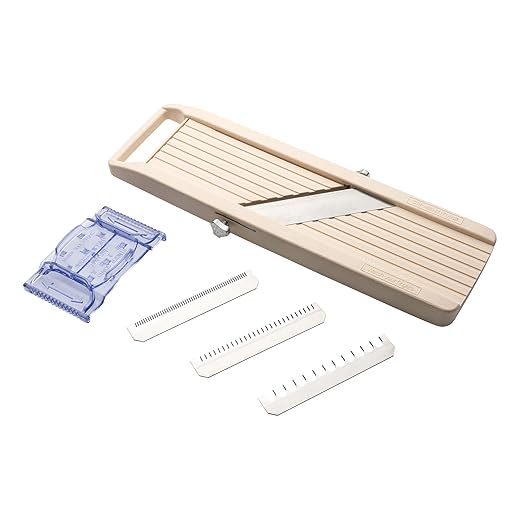

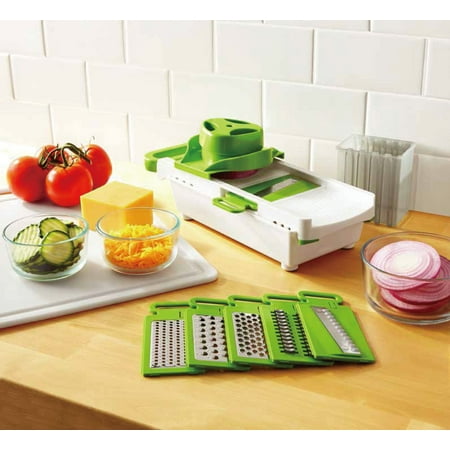
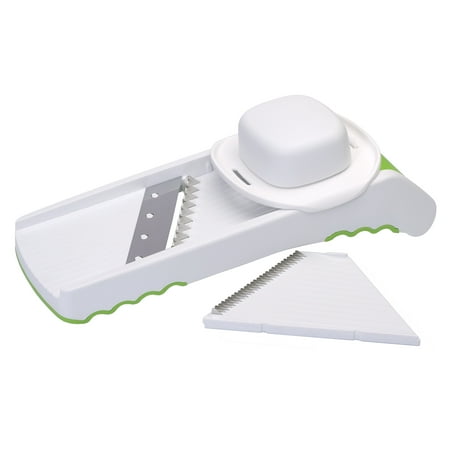
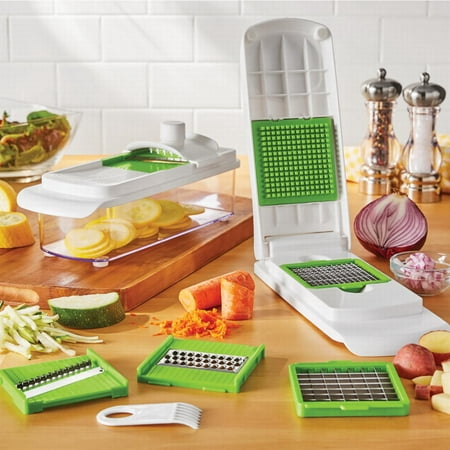
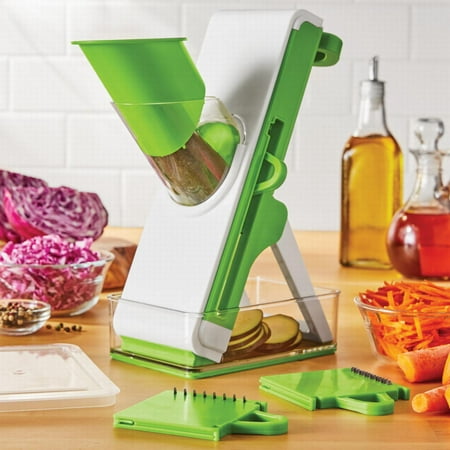
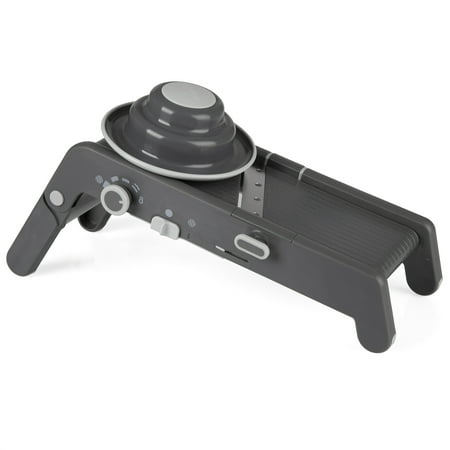
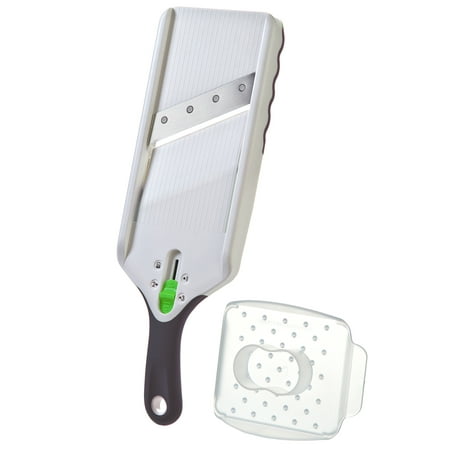



I enjoyed reading this article. Its thought-provoking and well-presented. Lets discuss this further. Click on my nickname!